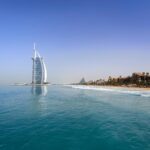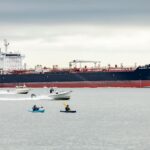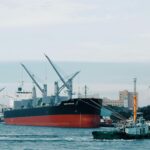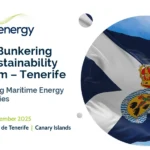Ocean Governance and Blue Economy: Sustainable Development in Coastal Zones

The ocean holds immense potential for economic growth and prosperity. From traditional sectors like fisheries and shipping to emerging industries like marine renewable energy and biotechnology, the “blue economy” offers a myriad of opportunities for job creation, innovation, and improved livelihoods. However, amidst this potential lies a crucial challenge: ensuring sustainable development that protects the delicate balance of marine ecosystems. This delicate balance between economic activity and environmental responsibility is where the concepts of ocean governance and the blue economy come into play.
Understanding the Blue Economy: More Than Just Industries
The blue economy paints a broader picture than simply industries directly extracting ocean resources. It recognises the intricate connection between the marine environment and a vast array of sectors, including:
- Traditional Blue Industries: These form the core, encompassing activities like sustainable fishing practices that prioritise responsible stock management and minimise bycatch. Responsible aquaculture, where fish are raised in controlled environments with minimal environmental impact, also plays a key role. Additionally, maritime transportation facilitates global trade and connects communities, requiring efficient and sustainable operations.
- Emerging Blue Industries: The ocean holds an abundance of untapped potential for innovative blue industries. Marine renewable energy harnesses the power of waves, tides, and currents to produce clean energy, reducing reliance on fossil fuels. Biotechnology leverages marine organisms and their unique properties to develop new applications in medicine, healthcare, and materials science. Ocean robotics and autonomous vehicles offer valuable tools for exploration, monitoring, and resource management.
- Supporting Sectors: The blue economy extends beyond the direct utilization of ocean resources. Coastal tourism relies on healthy ecosystems and pristine beaches to attract visitors, generating income and supporting local communities. Sustainable coastal development practices are crucial for managing infrastructure, reducing pollution, and ensuring the long-term viability of these areas. Even sectors like healthcare benefit from healthy marine ecosystems, as diverse marine life provides valuable resources for pharmaceutical development and medical research.
By embracing this holistic view, a truly sustainable blue economy strives to achieve three key goals:
- Harnessing Economic Potential: This involves transitioning towards sustainable practices in traditional industries, fostering innovation in emerging sectors, and ensuring responsible development of supporting sectors. By optimising resource use, minimising environmental impact, and promoting responsible business practices, the blue economy can unlock significant economic opportunities and create well-paying jobs across diverse industries.
- Preserving Ocean Health: Healthy ecosystems are not just an environmental objective, but the very foundation for a thriving blue economy. Overfishing, pollution, and habitat destruction pose significant threats. Sustainable practices, effective ecosystem management, and marine protected areas are crucial for ensuring the long-term health and productivity of the ocean.
- Promoting Social Equity and Community Development: Coastal communities often bear the brunt of ocean degradation and face challenges accessing resources and benefits. Inclusive governance, equitable access to opportunities, and empowerment of local communities are essential for ensuring the blue economy benefits everyone. By investing in education, capacity building, and local knowledge, we can foster sustainable livelihoods and ensure shared prosperity from the ocean’s bounty.
The Intricate Web of Ocean Governance: Navigating Stakeholders and Challenges
Ocean governance, the complex system managing human activities in the ocean, resembles a dynamic tapestry woven with various threads representing stakeholders, legal frameworks, and challenges. Each element plays a crucial role in ensuring sustainable development and maximising the potential of the blue economy.
Key Stakeholders:
- National Governments: Responsible for managing their Exclusive Economic Zones (EEZs), establishing regulations, and upholding international agreements. Their leadership and commitment set the tone for regional and global cooperation.
- International Organizations: Bodies like the UN and its specialised agencies set global standards, facilitate cooperation, and provide technical assistance. They play a vital role in bridging the gap between national interests and fostering collective action.
- Regional Bodies: Address shared challenges across specific regions, like managing shared fish stocks or coordinating pollution control measures. They offer localised solutions tailored to regional needs and complexities.
- NGOs and Research Institutions: Provide scientific expertise, advocate for conservation and sustainable practices, and monitor the health of the ocean. Their knowledge and dedication inform sound decision-making and hold stakeholders accountable.
- Local Communities: Possess invaluable traditional knowledge and are directly impacted by ocean use and governance decisions. Their inclusion and empowerment are essential for equitable and effective management.
Challenges and Complexities:
- Fragmented Legal Frameworks: A multitude of international and national laws, often overlapping and lacking harmonization, create confusion and complications in enforcement.
- Limited Enforcement Capacity: Inadequate resources, political will, or coordination can hinder the implementation and enforcement of regulations, allowing violations to go unchecked.
- Balancing Competing Interests: Striking a delicate balance between economic development, conservation of marine ecosystems, and social equity for coastal communities demands constant negotiation and compromise.
- Lack of Data and Knowledge: Understanding complex marine ecosystems and their interactions with human activities requires ongoing research, data collection, and knowledge sharing across disciplines and borders.
Building a Strong Foundation for Effective Governance
Effective ocean governance hinges on several key principles:
- Integrated and Holistic Approach: Recognising the interconnectedness of the ocean and considering social, economic, and environmental dimensions simultaneously for comprehensive management.
- Science-Based Decision-Making: Utilising robust scientific knowledge to inform policies, regulations, and resource management practices, ensuring they are evidence-based and sustainable.
- Transparency and Participation: Engaging all stakeholders in decision-making processes, fostering trust, and incorporating diverse perspectives to ensure inclusivity and ownership.
- Enforcement and Compliance: Developing robust mechanisms to ensure regulations are followed, violators are held accountable, and deterrence is achieved.
- Capacity Building: Supporting developing countries with the resources, expertise, and training needed to effectively manage their ocean resources and participate in global governance frameworks.
Examples of Successful Initiatives

Several initiatives around the world demonstrate the positive impact of effective ocean governance:
- The Large Marine Ecosystem (LME) Approach: This UN-driven program fosters regional cooperation and coordinated management of shared marine ecosystems, like the Benguela Current LME program in Africa.
- The Global Ocean Observing System (GOOS): This international network provides crucial data and information on the state of the ocean, informing decision-making at all levels.
- Marine Protected Areas (MPAs): Well-managed MPAs, like the Galápagos Marine Reserve in Ecuador, can conserve biodiversity while supporting sustainable fishing and tourism, demonstrating the benefits of balanced management.Examples of Success: Blue Economy Initiatives Paving the Way
Several initiatives around the world showcase the potential of the blue economy when coupled with effective governance:
- Marine protected areas (MPAs): Well-managed MPAs can conserve biodiversity while supporting sustainable fishing and tourism, like the Great Barrier Reef Marine Park in Australia.
- Sustainable aquaculture: Practices that minimise environmental impact while maximising food production are crucial, like integrated multi-trophic aquaculture (IMTA) systems.
- Offshore renewable energy: Harnessing the power of waves, tides, and wind offers clean energy while reducing reliance on fossil fuels, like the Dogger Bank Wind Farm in the North Sea.
- Blue carbon projects: Protecting and restoring coastal ecosystems like mangroves and seagrasses can store carbon and support local communities, like the Mikoko Pamoja project in Kenya.
These examples demonstrate that a balanced approach, where economic development goes hand-in-hand with environmental protection and social equity, is achievable.
Embracing a Sustainable Future: Charting a Course for a Thriving Blue Economy
The future of the blue economy hinges on our ability to effectively manage ocean resources. By prioritising collaboration, science-based decision-making, and inclusive governance, we can unlock the ocean’s economic potential while safeguarding its ecological health. This approach will ensure a thriving blue economy that benefits present and future generations. Moreover, embracing innovation and technological advancements will be crucial for navigating the challenges and opportunities of the blue economy. This includes:
- Developing innovative solutions: For example, biomimicry can inspire sustainable technologies, while advanced monitoring and data analysis tools can improve resource management and enforcement.
- Investing in blue tech startups: Supporting innovative ventures focusing on sustainable aquaculture, ocean energy, and pollution remediation can accelerate progress.
- Promoting public awareness and education: Fostering ocean literacy and responsible consumer choices can drive demand for sustainable products and practices.
By embracing these elements, we can navigate the complex tapestry of ocean governance towards a truly sustainable blue economy. This journey requires concerted efforts from all stakeholders – governments, businesses, communities, and individuals – working together to forge a brighter future for ourselves and the ocean.
Facts and Statistics
- The World Bank estimates that the ocean economy could generate $2.5 trillion in value and create 30 million jobs by 2030.
- The value of global marine and coastal ecosystems is estimated at $24 trillion per year.
- An estimated 620 million people globally depend on fisheries and aquaculture for their livelihoods.
- The Great Barrier Reef Marine Park contributes $64 billion annually to the Australian economy.
- Integrated multi-trophic aquaculture (IMTA) systems in Vietnam have increased fish production by 300% while reducing pollution.
- The Dogger Bank Wind Farm in the North Sea will generate enough electricity to power 6 million homes when completed.
- The Mikoko Pamoja project in Kenya has sequestered over 500,000 tons of carbon dioxide since its inception.
Resources
Marine Spatial Planning: Optimising Ocean Use For Conservation And Industry
Blue Economy and Blue Finance: Toward Sustainable Development and Ocean Governance















